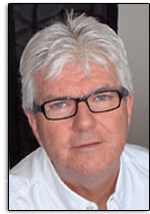It seems Europe and Asia have the right idea about the serious benefits of rail travel. In many areas trains have the clear advantage over road travel between cities that sit anywhere from 160 kilometres to 800 kilometres apart. While the future of public transport within cities and metropolitan areas lies with a mix of metros, light rail, trams, and buses, high-speed rail (HSR) between cities is the real ticket. This fact has been acknowledged in more than thirty countries around the globe (including Mexico and Morocco) that have built or are in the process of building new HSR lines.
Canada is the only G7 country without a high-speed system. In the U.S. there is one HSR in operation - the Acela Express, which runs in the Northeast corridor. There are plans for higher-speed rail and full HSR in California, The Midwest, New England, Florida, Texas, Pennsylvania, the Pacific Northwest, Colorado/New Mexico and the Southwestern states. As of 2015, the California High-Speed Rail Authority is into construction on the California HSR project. This will link Anaheim, San Francisco, San Jose, Sacramento, and other major cities in the region. Completion date is planned for 2029 with the first stage targeted for completion in 2017.
A high-speed train is one that is capable of attaining speeds of over 200 km/h on upgraded conventional track and at least 250 km/h on track specifically designed to take such stresses. By 2009, trains running on the most up-to-date systems in Europe were reaching speeds of 360 km/h.1
When I lived in Britain in the early eighties, the office I worked out of was some 320 kilometres south of the company's head office, which I was required to visit on a regular basis. Part of that journey meant travelling through the heart of London - this was before the M25 motorway, which now skirts the huge city. To make any time up and avoid London's notorious gridlock I had to travel through at four in the morning and the inner core was already buzzing with trucks. The trip north totalled four hours plus and I was exhausted. There was also the wear-and-tear on the car. Taking the train meant most of the journey was aboard the Inter-City 125, which in those days, cruised at 200 km/h. Travel time was one hour shorter and I was able to enjoy a leisurely meal.
For trips of 500 kilometres, or so, HSR has a clear leg up on either the automobile or air travel, in terms of space, fuel consumption, air pollution, greenhouse gas (GHG) generation, and usually, the time spent and costs to passengers. HSR lines also cost less per kilometre to build than interstate or inter-provincial highways. They are an ideal alternative to expanding airport capacity, which requires large expanses of land that is typically unavailable in and around cities. If automobile travel is inefficient in its use of space and generation of congestion, air travel is exponentially more so, and is increasingly difficult to accommodate close to dense urban areas. In fact over the past five decades, only one new green-field airport has been built in the U.S. - Denver International - located practically in Kansas and required a land area twice the size of Manhattan.2
The HSR mode of transport has tremendous potential for reducing carbon emissions, especially when one considers the fact that aviation is a major consumer of petroleum. Short-haul air flights are much more energy-intensive per kilometre than long flights, since the great surge of energy required to get the plane airborne is roughly the same whether the plane is travelling between Toronto and Montreal or between Toronto and Europe. In a bid to reduce our dependence on carbon, many of these flights could ideally be replaced by HSR - especially where the trains are powered with renewable energy. Sweden is a great example in reaching its climate-wise goal. It now powers 55 percent of its HSR entirely by renewable energy.
Japan pioneered HSR in 1964 with its 547-kilometre long Shinkansen bullet train from Tokyo to Osaka. The country now boasts a HSR network of some 2,188 kilometres interconnecting nearly all of its major cities. Until the tragic earthquake and tsunami of March 11, 2011, these trains were routinely operating at speeds of up to 306 km/h, safely moving hundreds of thousands of passengers every day. The departure and arrival accuracy of these trains is measured in mere seconds. This performance literally eliminates the need for passengers to travel without a schedule. As high-speed trains enter the cities, they merge with existing rails and operate at conventional speeds.
Beyond HSR, Japan is track-testing its new high speed magnetic levitation (maglev), which is propelled by powerful magnets, and floats above its track, thereby eliminating the friction that is a limiting factor with conventional trains. Designed to cover the ground at 500 km/h, the first maglev unit is planned to run from Tokyo to Nagoya starting in 2027.3
By the end of 2009, Europe had 6,214 kilometres of high-speed rail on which trains could run at speed exceeding 250 km/h. The European Union (EU) is working on a pan-European HSR network that would integrate the rail networks of its various countries, improve rail safety, and allow trains to cross borders within the EU without having to stop.
Since Europe's first HSR, from Paris to Lyon, commenced service in 1981, the entire continent has made enormous strides toward fulfilling this intra-continental vision. When the Paris-to-Brussels link first opened, it covered the 312 kilometres in 85 minutes. Almost overnight the share of those travelling by train between the two cities rose from 24 percent to 50 percent. On top of that, carbon-dioxide-intensive airline travel has now virtually disappeared. Short-haul air service has similarly been replaced by HSR in Germany, between Cologne and Frankfurt. Paris to London passengers enjoy a two and a quarter hour journey via the Eurostar HSR.
In China, with the massive job layoffs that had occurred during the 2008 global economic downturn, construction of a high-speed system was used as a highly effective stimulus project. More than 110,000 labourers were quickly mobilized to build the 1,319-kilometre route between Beijing and Shanghai. It opened in 2011, with trains running at nearly 320 km/h, it cut travel time between the two centres from 12 hours to five hours. Huge HSR stations were built in industrial districts on the outskirts of the cities, which passengers can access from the city centres by subway or bus.
Included in China's network are two new bullet trains between Beijing and the cities of Chengdu and Chongqing in the southwest of the country. With initiatives like these moderate prosperity became evident.
China has now resumed its rapid construction of one of the world's most ambitious HSR projects - a network that will span the country, consisting of four north/south routes and four east/west lines. Work commenced in December 2012 with the target of a HSR network that will cover almost all of the nation's cities with a population of more than half a million by 2015. It is intended that much of China's passenger rail travel be moved onto HSR by 2020 in order to free existing tracks for freight.
With air travel being such an expensive endeavour, travel by rail is a most welcome, comfortable, and energy-efficient way to go. It's expected that train terminals will also be developed at a far greater rate than airports further adding to the ease with which people travel.
1 Roxanne Warren, "High-speed rail - existing worldwide and envisioned in the US."
Rail and the City: Shrinking Our Carbon Footprint While Reimagining Urban Space. MIT Press (2014):
2 Ibid
3 Alex Davies, "Japan Is Testing Its New 300 MPH Floating Trains." Business Insider (June 11, 2013):











